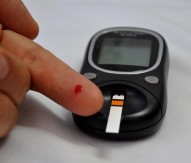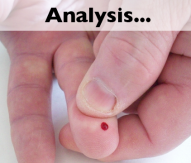
Analysis… Bigger than cancer
Awareness, innovation and prevention must be improved if Europe is to effectively cope with the burden of a disease more deadly than cancer, ESC president Professor Fausto Pinto tells Portal.
The European Society of Cardiology (ESC) represents over 85,000 professionals working in the field of cardiology across Europe and the Mediterranean Basin, as well as globally, all with the primary mission of reducing the burden of cardiovascular disease in Europe. In line with this goal the main activities of the society are to: develop and disseminate clinical practice guidelines to enhance the appropriateness of practice; improve the quality of care; achieve better patient outcomes; improve cost effectiveness and identify required areas of research; influence CVD policies by working alongside the EU institutions to promote concrete actions and initiatives such as the European Heart Health Charter; support the continuous medical education of cardiologists through the provision of resources and activities, including accredited educational courses; and contribute to improved patient care through the EurObservational Research Programme, which performs systematic cardiovascular surveys across Europe.
This initiative was launched in 2009 to provide a better understanding of medical practice based on observational data, and acts as an independent opinion-leading body, keeping the media reliably updated on all cardiovascular-related issues, raising awareness among the general public, and ensuring health professionals are up-to-date with the latest advances in the field.
Each year the society also organises the ESC Congress, the largest and most influential cardiovascular meeting in the world, contributing to global awareness of the latest clinical trials and breakthrough discoveries. Ahead of this year’s congress, Portal met with ESC president Professor Fausto Pinto, who here outlines how Europe can better meet the burden of CVD, the three-tiered approach to its reduction, and society’s role in combatting the multitude of risk factors which contribute to its prevalence. He also discusses the gaps in funding for CVD research, the worrying health inequalities that persist across the continent, and why medical audiences and the public alike must be made more aware of this somewhat overlooked killer.

Professor Fausto Pinto © ESC Congress 2015
CVD today represents a significant healthcare challenge. What must be done if we are to effectively cope with this burden?
First of all I think we need to increase awareness of cardiovascular disease, which is something the ESC has been working on for the last few years now. CVD is the number one killer in Europe as well as having the highest morbidity rate of any disease, and this must be made known to as many people as possible because only once you are aware of something can you take the appropriate action and work towards a solution to it.
A second priority is innovation, which is crucial in order to improve our understanding of the disease and to develop solutions from both a diagnostic and therapeutic standpoint. In this area we have so far been largely successful. Progress has been made in terms of diagnosis, treatment, drug development, medical device development, and so on. CVD mortality is now falling in most European countries.
But we can’t be complacent; there is still much to be done. The disease isn’t ‘fixed’: the prevalence of CVD is increasing and, alongside it, the challenges. Supporting innovation in disease management and education is therefore vital.
Finally, prevention. It’s one thing to diagnose and treat disease, but prevention will always be better than cure and should remain the ultimate goal. Unfortunately, the amount of resources we are currently putting into prevention is far smaller than the amount we have dedicated to treatment. Today 97% of resources go towards the latter and just 3% the former. Whilst the number of activities and programmes aimed at improving the way we can prevent disease has been increasing over the last few years, we need to do more.
When it comes to prevention it’s important to note that we can control or modify many of the risk factors for CVD. Some we can’t – age, gender, genes, for instance – but others, like smoking habits, eating habits, exercise habits, (‘lifestyle’ factors), we can take responsibility for. So too can we better target conditions that we know make more likely the development of disease, such as diabetes, hypertension and obesity.
So it is these three pillars that we must combat if we are to effectively cope with the complex pandemic of CVD: increasing awareness; increasing support for innovation; and increasing support for prevention.
What are your thoughts on interventions such as the plain packaging of tobacco products, smoking bans in public areas, and minimum pricing for alcohol? What more could be done from a prevention perspective?
As a society we must do the best we can to reduce as much as possible the burden of disease. It is a social responsibility to identify those risk factors we can control and to make strides towards reducing the exposure of the population to them. We must be very strict. I myself am very much in favour of a hard smoking ban in public areas. We know that passive smoking is just as bad as active smoking. Whilst tobacco use is an individual choice, it should be restricted to the primary smoker and secondary damage to non-smokers limited.
This goes hand in hand with education to promote healthy lifestyles, diet and physical activity, the promotion of which should again be the responsibility of society. When we think about disease we tend to think about treating it, but by then we are already too late. Social measures to prevent the onset of disease must be taken. It is our duty.
You have mentioned the importance of innovation; do you feel there is sufficient scope within funding programmes to support research and innovation in cardiovascular health?
When it comes to funding support I think we will always feel that we need more. We recently took part in the CardioScape study, a 23-month (2012-2014) Co-ordination and Support Action funded by the Seventh Framework Programme which aimed to outline the CVD research and innovation landscape across Europe, determine duplications within national research programmes, identify the gaps, and make recommendations for future research strategies. The study showed that over a three-year period (2010-2012), a total of around €876m was awarded in support of CVD research in the EU. More than €2.25bn was meanwhile dedicated to cancer research (according to the latest available data) – and this despite CVD being Europe’s number one killer.
Now, I am not denying the importance of cancer research, but there ought to be more balance in terms of funding: investment into disease research should be proportional to the scale of the challenge a disease represents.
Horizon 2020 represents an increase in the amount of resources allocated to research and is, I think, a very good programme, but it remains to be seen how it will evolve with regard support to CVD in particular. During these early days we will continue to pay close attention to and monitor its changing scope. At the moment we are a little worried as no specific areas have been predefined, so to speak. Whilst on one hand that’s a good thing – it fosters competition, for instance – we are keen to make sure that there is a balance in research interests. We don’t wish to see major funding dedicated to other fields of disease whilst CVD is overlooked. That is a big concern.
This area is something we are currently working on via our Brussels delegation, the European Heart Agency, which is trying to draw attention to the importance of investing in CVD research as a way to improve understanding and management of the disease.
Health inequalities – in terms of member states, gender, access to healthcare, and so on – persist throughout Europe. What can be done to better tackle this problem?
When it comes to matters of health inequalities, I must again stress the importance of increasing understanding and awareness of the statistics. We have now a significant amount of data which demonstrates the differences between different countries and even within countries. Large discrepancies exist between east and west Europe in particular; eastern countries and some of those in the north have the highest mortality rate from coronary heart disease, for example, which has to do not only with genetic factors but also more prevalent risk factors in those regions – diet and other lifestyle habits. Meanwhile, it’s clear that prevalence of disease is much lower in southern Europe than in the east.
Gender represents another area of inequality, and this is particularly important because it is something which goes unknown or unappreciated amongst the population, health professionals included. Whilst CVD is the leading cause of male death in the majority of European countries, it is the main killer of women in every single European country, overtaking even cancer. CVD causes some 50% of female deaths in Europe and, for instance, breast cancer only 3%; yet the perception amongst many is that most women die as a result of the latter. Let me stress again: that is not true. The majority of women die of heart disease.
It is important of course not only to increase awareness but to then translate that into action, and the way to do that is to improve how we reach out to populations and to ensure that what is known today about prevention, about at-risk groups and so on, is known among the lay public too. It is crucial that we focus on identifying early those most at risk so that we might intervene at an earlier stage of disease and delay or lessen its development. If we ignore the facts or fail to convert them into action, we divert attention and resources and fail to confront the real problem.
Professor Fausto Pinto, FESC
President
European Society of Cardiology
This article first appeared in issue 8 of Horizon 2020 Projects: Portal, which is now available here.




